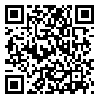BibTeX | RIS | EndNote | Medlars | ProCite | Reference Manager | RefWorks
Send citation to:
URL: http://jispp.iut.ac.ir/article-1-536-en.html
Abstract
In order to assessment of the relation among low temperature with (Fv/Fm, leaf chloropyll and caratenoied contents) of clover spp, an experiment was arranged as split plot in RCBD with four replications include plant date as main plot ( 15 and 29 Sep.) and clover spp as sub plot ( Persian spp with 7 cultivars, Berseem , Red and Crimson clover with 1 cultivar) at Seed and Plant Improvement Institute of Karaj in during 2010-2011. The measurement of physiological traits in clover spp recorded at rosset growth stage in days with temperature under zero centigrad. The results showed that low temperature stress cuased significant decrease clover spp that the decrease rate could be because of low temperature stress at field. At among clover spp, Red clover cv. Nassim had the least less chlorophyll content. The results also showed that chlorophyll (a) is more affected to low temperature than (a/b), (a/b) and (b). During stress ( S1, S2 and S3), Fv/Fm of clover cultivars was 0.734, 0.788 and 0.555 respectively, that represent the effect low temperature stress to Fv/Fm in all treatments especially S3. In addition, the results showed that in low temperature stress, Red clover cv Nassim had less yield Fv/Fm than to other cultivars. In general the using of Fv/Fm, chloropyll content and caratenoied leaf parameters is recommended for screening and evaluating of clover cultivars in under low temperature stress conditions at fields.
Received: 2016/01/10 | Accepted: 2016/05/14 | Published: 2017/03/12
| Rights and permissions | |
 | This work is licensed under a Creative Commons Attribution-NonCommercial 4.0 International License. |






